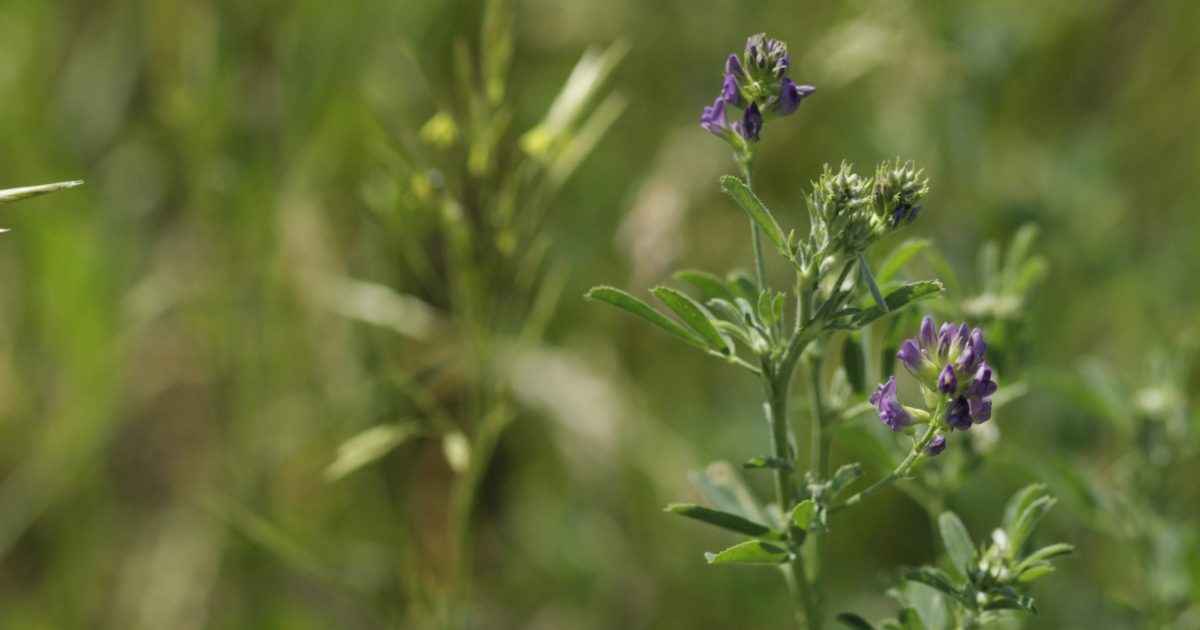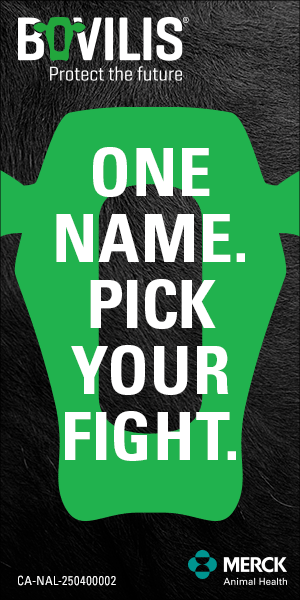AB Direct - Steers
Rail: 495.75-501.50 FOB feedlot (last week)
AB Direct - Heifers
Rail: 495.75-501.50 FOB feedlot (last week)
US Trade- Steers
Rail: 365.00-368.00 (NE, IA) last week
US Trade - Heifers
Rail: 365.00-368.00 (NE, IA) last week
Canadian Dollar
0.27

Making hay while the sun swelters
Producers often prefer to cut alfalfa or alfalfa-grass hay as the crop reaches its peak volume, but that could result in a need for additional supplementation at feeding time.
If you’re fortunate enough to have a hay crop to harvest, you might be curious how the heat can affect crop maturity, as well as the harvest process.
This week, we spoke with Barry Yaremcio of Yaremcio Ag Consulting, to get some ideas for haying in the heat. In his latest BYOB (Barry Yaremcio on Beef) blog, Yaremcio covers this very topic.
Producers urged to start scouting for grasshoppers
In this interview, we talk about everything from how much growth a plant needs to safely withstand being cut, to some top tips for raking and maintaining quality, to ensuring the windrow is truly ready to bale.
Cutting quality hay
“If you’re looking at a mixed stand of alfalfa and grasses, the optimum time for quality is roughly when the alfalfa has 10 percent bloom,” says Yaremcio, adding that means there is one open flower on 10 percent of the plants in the field.
“For every week you delay your cutting, your protein levels will drop roughly one to two percent, and your energy values, or TDN, will drop two to three points as well.”
Preventing and treating heat stress in beef cattle
What that means long-term, is potentially needing to offer supplementation at the time of feeding.
“It may cost you more waiting for that hay crop than what you really anticipate.”
Growers will need to consider as well, that in hot, dry conditions, plant maturity hastens, which also means quicker quality loss.
Top tips for raking
Some of Yaremcio’s top tips for raking, include:
Not letting your rake scratch the ground.
“Those dirt particles are typically what cause the white mould to be present in hay, if it’s baled a little bit on the moist side”
Not waiting too long to rake.
Don’t wait until the day before you hope to bale, says Yaremcio, as this can result in greater leaf loss.
“If you want to go in with a rake, go in two or three days after the hay has been cut, so it’s at that 40-45 percent moisture stage, roughly.”
You can also help minimize leaf loss by raking in cooler, evening temperatures, and slowing down.
Ensure plants are cured
While it may seem like minutes before your windrow is ready for the baler, Yaremcio cautions there’s more to it than the moisture probe reading.
“The big thing is: are those plants actually cured?”
Hollow-stemmed alfalfa plants may be dry on the outside, but still need time to cure through to the inside.
Yaremcio recommends using physical test methods to determine if the hay is cured. You can do this by taking a sheaf of crop (roughly one-inch in diameter) in both hands, and rotating your hands like bicycle pedals.
“If you make three or four rotations, the stems break completely and you can pull your two hands apart, that tells me that the hay is cured, and it’s ready to bale.”

